|
|
#1 |
 Join Date: Mar 2007
Location: Crystal Lake, IL
Posts: 7,180
|
Some people have asked about port matching the heads to the intake....obvious solution is the taper the IH runner, but if you plan on port matching in the future, you might go ahead and open it up to 36mm from the get go.....
if so this is what a 36+MM IH look like when mated to a stock head...to me its not that bad...not optimal; but I am guessing you are still picking up over a tapered runner: 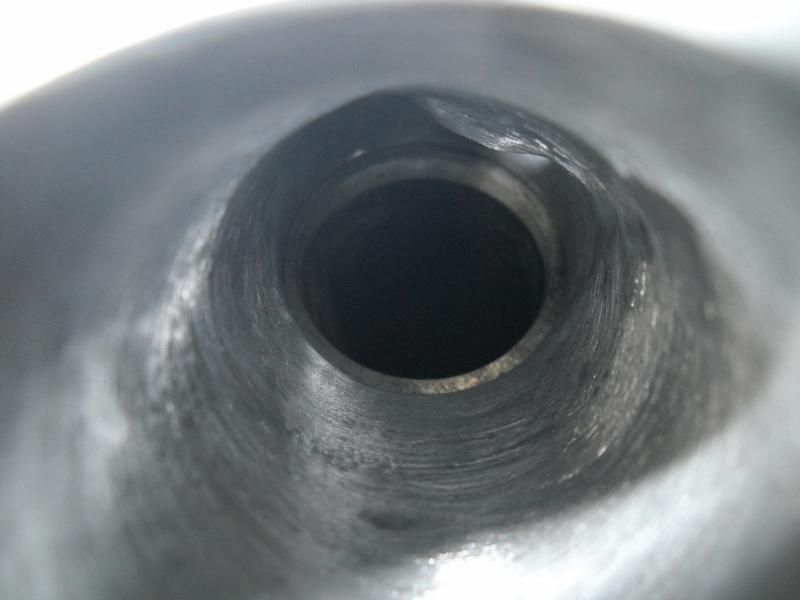
__________________
LGAFF 90 #966-150K miles-sold 92 #234-sold 1987 Callaway TT #17 1991 ZR-1 #1359 |
|
|

|
|
|
#2 |
 Join Date: Mar 2007
Location: Crystal Lake, IL
Posts: 7,180
|
__________________
LGAFF 90 #966-150K miles-sold 92 #234-sold 1987 Callaway TT #17 1991 ZR-1 #1359 |
|
|

|
|
|
#3 |
|
Join Date: Dec 2012
Location: NC
Posts: 1,783
|
Don't know much about airflow dynamics, but I do know ALL the good questions ...
With such a difference in bore from IH to head, is it possible that instead of a smooth taper, from IH to head, that you induce vortices in the air column, which would accommodate better flow? Such as with angular FURROWS. Like the Coriolis Effect - Think of the how the juice and chunky jam goes away through a SMALLER hole, when you pull the trigger in the 'library' every morning. Or how the water drains in the sink even. It DOES want to spiral out to accommodate the restriction... ( I think GM even tried to mimic this with their VORTEC induction ) Perhaps 'furrowing' at the juncture, that could later be opened for full matching? Or perhaps 'dimpling' in the juncture (think of a golf ball aerodyne). If furrowing, would there be the appropriate angle in the column? That would be determined by differences in bore of each player? EDIT: Or determined by bore difference x some linear gradient ( = angle / length of furrows). I think airflow through the juncture AS IS, would have some nasty eddies fighting against the flow...? Anything that would maintain some semblance of lamination in the flow. Definitely intriguing. I come up with good stuff huh! Still thinkin' on this too here... Last edited by Schrade; 03-23-2014 at 01:27 AM. |
|
|

|
|
|
#4 |
|
Join Date: Dec 2012
Location: NC
Posts: 1,783
|
Furrowing. (which could be leveled when full porting is done).
In fact, when full head port matching is done, would SOME degree of angular furrowing STILL be in order? I asked long ago here, if the injector bosses were specifically designed, with flow dynamics in mind - Dunn's or Burmal's mind, that is??? HMMMmmmmmmm.......................... Last edited by Schrade; 03-22-2014 at 11:38 PM. |
|
|

|
|
|
#5 |
 Join Date: Nov 2007
Location: Squires (near Ava MO in the Mark Twain N'tl Forest) - Missouri
Posts: 6,466
|
Quote:
So, some (any transition) tapering is better than none. Multiple sources on the topic of porting seem to focus on 4º (approx 14.3:1) taper (or less) is required to avoid the practical issues of reversion and restriction. Going from 36mm to 32.5 mm (at the valve guide boss of my 90 heads) at 4º is ≈ 2". However, it is 2.85" from the IH to the valve guide boss (again on my 90). So, I went the whole 2.85" just for a bit more thickness to avoid a coolant/oil incursion problems as I did my (initial plenum/IH only) head port matching with the heads in place. 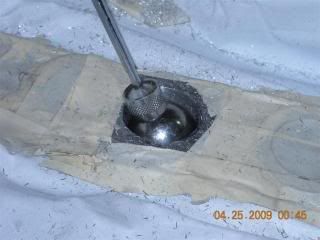 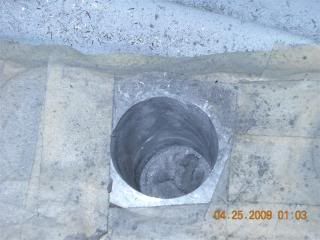 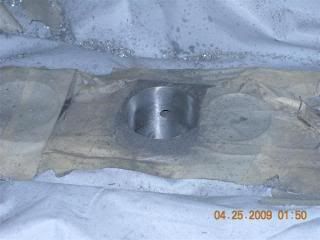 Wow! I wish I had dyno'ed the result then so I'd have a clearer picture of what the net gain was after I later finished the head porting. But the "ol' seat of the pants" gauge said the lion's share of the net 432 rwhp came from the top end alone. As you know, the head material is easier to cut than the IH. So, it took under 2 hours per hole to do the initial head runners. (BTW, I pulled the secondaries at that time and applied the same taper to all the head runners while I had the IHs off). And, an added benefit was to reduce the amount of cutting when I later finished porting the heads; eventual full porting was considered too when I initially tapered the head port match. |
|
|

|
|
|
#6 | |
 Join Date: Nov 2007
Location: Squires (near Ava MO in the Mark Twain N'tl Forest) - Missouri
Posts: 6,466
|
Quote:
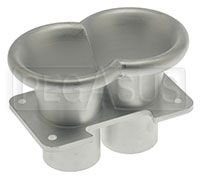 As for the OE injector bosses, they're massive bastards! Removing them as much as possible (see Lees' pic) is part of the increased flow the stock LT5 craves so much! Last edited by Paul Workman; 03-23-2014 at 12:11 PM. |
|
|
|

|
|
|
#7 |
 Join Date: Mar 2007
Location: Crystal Lake, IL
Posts: 7,180
|
A 90 I did last year was 36mm, not port matched and it picked up 37hp on the same dyno....so no real ill effects...
And that was without a tune
__________________
LGAFF 90 #966-150K miles-sold 92 #234-sold 1987 Callaway TT #17 1991 ZR-1 #1359 Last edited by LGAFF; 03-23-2014 at 12:12 PM. |
|
|

|
|
|
#8 | ||||||
|
Join Date: Dec 2012
Location: NC
Posts: 1,783
|
Been reading (so more Q's at best)
'Furrowing' is out (except maybe SHORT 45' channels, cut into head inlet, but only instead of NOTHING, such as to prevent the 'standing wave', that PW refers to below). Furrowing (or channels) would be better serving for solids (bullet rifling, i. e.), or liquids. Gases have plasticity, so dimples WOULD be in order - HIGH order indeed, for variations in bore, and even then, only in absence of taper... THoughts??? ---------------------------------------------------- Quote:
----------------------------------------- Quote:
------------------------------ Quote:
------------------------------- Quote:
------------------------------ Quote:
Just to be sure here tho', you ported IH's, and didn't touch head ports at all? And put it together, like your first snappic above post #1??? Quote:
When you port heads too, do you HAVE TO do valvework? Do heads HAVE TO come out, to have tapered portwork done to them??? Has anyone done a partial port of IH's, WITH ONLY A TAPER? What's the diameter of the plenum ports (once they're channeled to individual ports)? Where is the bottleneck on the intake on a stock '90? Are dimensions in FSM? Now that I got the OBX's with 2"+ pipes, + 3" PE pipes, and no resonator restriction, where's MY next flowjam??????????????????? Last edited by Schrade; 03-23-2014 at 03:39 PM. |
||||||
|
|

|
|
|
#9 |
|
Join Date: Dec 2012
Location: NC
Posts: 1,783
|
Quote:
If he DOESN'T taper the head port inlets, then his laminar flow STOPS at the head inlet ridge - doesn't it? |
|
|

|
|
|
#10 |
 Join Date: Mar 2007
Location: Crystal Lake, IL
Posts: 7,180
|
The 90 only had ported intake and 63MM TB....I ported the airhorn, etc....doubt that mattered much.
No change in exhaust, or headers
__________________
LGAFF 90 #966-150K miles-sold 92 #234-sold 1987 Callaway TT #17 1991 ZR-1 #1359 |
|
|

|
 |
|
|